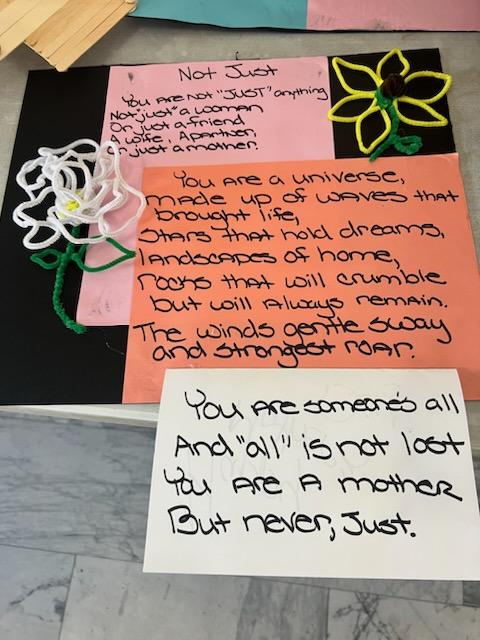What We’re Looking For as Prop C Funds Roll Out
BellaRoze Nelson
San Francisco is OUR home. No matter where we came from or how we ended up here, we are here. We are human, we too reminisce about the good old days, and wonder when the line between right and wrong got so hazy. The streets of San Francisco tell a brutal story of wealth, poverty and the pursuit of profit over the housing needs of human beings. The overwhelming majority of homeless San Franciscans became homeless as housed San Franciscans, and this is also the case everywhere else. Most impoverished people stay where their support systems are, while some move—typically for jobs and family. However, a very confusing homeless assessment done through the One System—also known as Coordinated Entry—is a huge contributing factor to homelessness in San Francisco.
Coordinated Entry is divided into three subgroups; Adult, Family and Youth. This is the starting point, an assessment that all unhoused people needing housing must take that dictates who gets access to shelter beds and later housing. This can be a Single Room Occupancy (SRO), residential treatment centers, permanent housing, supportive housing or what they call “problem solving” for those who did not score high enough on their housing assessment through the prioritization process.
The goal of creating Coordinated Entry was to streamline the process of placing people into housing, but there are political and legal loopholes that leave many falling through the cracks, especially families with children or Black pregnant women. This is inequitable funding that is not being appropriated to African Americans within San Francisco, and Black women suffer this discrepancy during their pregnancies and postpartum care.
Getting into housing would transform the lives of the 1 in 25 public school kids who experience homelessness alongside thousands of youth, which is why Proposition C required that one-quarter of the housing opened by the measure goes to families with kids, and one-fifth go to youth as well. Tackling homelessness with compassionate expansiveness is an often overlooked but critical component of intervention in homelessness.
Diversification is one of the most fundamental rules of investing; diversifying the services of a population that is itself diverse would pay substantial social dividends.
“There are lots of people who just don’t have access to services, housing or jobs because of their skin color, gender identity, criminal history or housing status,” said Ms. Earl, a peer researcher and focus group facilitator, as cited in the Stop the Revolving Door report.
Prop. C represents a commitment to fund homelessness programs, mental health and substance-use treatment programs and eviction defense efforts, a push that is needed far beyond the county limits of San Francisco. We—the invisible, the forgotten, the abused, the trafficked, the broken, the foreigners, the locals, the veterans, the refugees, the victims and the unfortunate—who are unhoused have been counted at over 15,000 in the Bay area alone.
Prop. C demonstrates that commitment by specifying how the money brought in must be spent, and insisting that people with lived experience be at the center of decision making. Prop. C funding goes into a fund that is overseen by a committee that is appointed by the Mayor and Board of Supervisors, and who are currently half composed of people with lived experience of homelessness. The committee is tasked with ensuring that when a homeless person enters the doors of a trusted community organization, the organizations have the resources to offer housing, shelter, rental assistance, and other tangible benefits.
Many San Franciscans are concerned about how dirty the streets have become as a result of lack of access to public bathrooms. Prop. C can fund bathrooms and sanitation centers to ensure our visitors and residents alike have access to a dignified place to relieve themselves. The domino effect impact of Prop. C will not only benefit the underground economy surrounding the lives of the marginalized and mistreated, but also could dramatically lower crime rates.
Under Prop.. C, 50% of available funding goes to housing. According to Our City Our Home’s website, there are 4,000 “shovel-ready” sites that have been identified by the Mayor’s Office of Housing and Community Development (MOHCD). This includes funding for 1,000 units of vacant SRO’s that could be used if subsidy funding were available, 1,500 units of supportive housing in the affordable housing pipeline that is currently unfunded in the Department of Homelessness and Supportive Housing’s strategic framework, and 300 vacant or potential development sites that have been identified by the city.
An additional 25% of the funds generated by Prop. C will address the needs of people with mental health issues. These funds have the capacity to serve 4,500 individuals with street-based medicine and residential care, designed to ensure severely mentally ill and drug addicted people can recover.
For instance, Prop. C funds helped open The Harm Reduction Therapy Center (HRTC) in the South of Market district, an organization that brings together a sophisticated understanding of mental health, total acceptance of drugs and drug use as a way of living and coping, harm reduction, case management, and other necessities–food, harm reduction supplies, , and love–in a therapy package that can happen sitting on a sidewalk chatting or in a private office.
According to Corey Drew, a practicing HRTC therapist, “Our job is to let people know that they are loved and that they matter.” This is the heartbeat of harm reduction therapy, to do anything and everything to make sure people know they are loved and valued. From there all else flows.
The last 15% of funds unlocked by Prop. C are going toward rental assistance and eviction defense programs and 10% to emergency shelter and drop-in hygiene programs. An oversight committee watches over how funds are spent and makes sure the programs are meeting the needs of those they are designed to serve. The lack of accountability and the lack of those with lived experience at the table making decisions has led to the lack of health equity for pregnant Black women and families with children, who are often forced to separate and split their families up due to eligibility requirements in programs that does not accommodate families and their unique needs nor have enough housing available for families to stay together and be safe.
Added to the $300 million San Francisco already dedicates to homeless services, this funding will go a long way in addressing this systemic problem. The bulk of the city’s homeless budget serves those already housed. San Francisco is currently spending 6% of its budget successfully housing over 11,000 of our poorest residents and sheltering 2,500 more each night. As more funds from Prop. C roll out, San Francisco moves closer to getting chronically homeless people off the streets, preventing children and youth from experiencing long term homelessness, and preventing San Franciscans from losing their housing with rental assistance and other forms of creative assistance.
Does this sound familiar to you?: “We all have the right to be secure of our persons, houses, papers, and effects, against unreasonable search and seizure.” Well, in our reality and on these streets, the rules are different from what’s written in the Bill of Rights. It’s every man for themselves and survival of the fittest, the underbelly of societal apathy. There are thousands of people without shelter every single night and thousands on waitlists for permanent housing. We need more resources!
It’s prudent to ask yourselves, is impact really the goal or is the homeless crisis just a political talking point? Trust is a two-way street—by being bold and putting the funds to work, San Francisco would cut right to the very heart of multiple crises. Investing in the underdog will allow growth in every sector affecting homelessness with smaller more manageable influxes along the way.
The audacity of those in power to continually ask us to prove we are in need, to ask us to share our pain, show our battle scars, and then to promptly invalidate and minimize the violations and humiliation in our stories in favor of shortchanging us yet again. Homelessness is a multifaceted problem; therefore, the answer should ONLY offer multifaceted benefits. All we want is a safe place to call home and heal. The expectation for homeless people to unpack years of trauma and suffering is sabotage at its finest. Believe in us and check back in five years and see how we contributed back to society the best versions ourselves are capable of.



